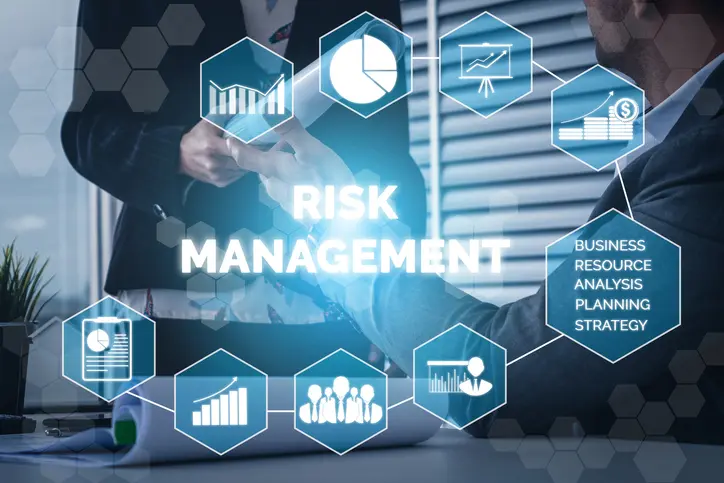Embarking on an ERP system implementation is one of the most transformative, high-stakes projects a company can undertake. A successful ERP system implementation promises to unify your business, streamline operations, and provide a single source of truth for decision-making. But ERP implementation is also notoriously challenging. The reality is that the success of your ERP system implementation depends less on the specific software you choose and far more on the quality, planning, and execution of the implementation process itself.
What Is ERP System Implementation?
Let’s be clear: an ERP implementation is not a simple software installation. It is a massive, strategic project that fundamentally changes how your business operates by re-engineering processes and retraining people to use new technology. The core purpose of an ERP System is to integrate all your critical business functions—from finance and logistics to human resources and customer relations—onto a single, unified platform. The implementation process, therefore, involves a wide range of critical activities, including deep business process analysis, complex data migration, careful system configuration, comprehensive employee training, and, most importantly, strategic change management.
The Key Phases of the ERP Implementation Process
While every company’s journey is unique, a successful implementation almost always follows a structured, phased roadmap. This approach ensures that no critical activities are overlooked and that the project progresses in a logical, controlled manner. Think of it as the blueprint for your business transformation.
Phase 1: Planning and Discovery
This is the foundation upon which your entire project is built. Getting this phase right is non-negotiable. Key activities include defining clear, measurable business goals and KPIs that you want to achieve with the new system. You’ll assemble the core project team, which must include an executive sponsor with the authority to drive decisions, a dedicated project manager, and key representatives from every department that will be affected. This is also when you’ll select the right ERP software and implementation partner for your needs and establish a realistic budget and timeline.
Phase 2: Design and Configuration
In this phase, the high-level plan is translated into a detailed technical blueprint. The project team conducts a thorough analysis of your current business processes (the “as-is” state) and works with department heads to design new, optimized workflows that leverage the ERP’s capabilities (the “to-be” state). The ERP system is then configured to support these new processes. This is a critical juncture where you’ll make key decisions about which features to use, what customizations might be necessary, and how you will tackle the complex task of data migration.
Phase 3: Development and Data Migration
This is the primary “build” phase of the project. If any customizations, custom reports, or integrations with other essential business systems are required, they are developed and coded here. However, the most critical and often underestimated activity in this phase is data migration. This involves extracting data from all your old, disparate systems, cleaning and reformatting it to ensure its accuracy and consistency (a process known as “data cleansing”), and finally loading it into the new ERP system.
Phase 4: Testing and Validation
This phase is your quality assurance checkpoint, and it is absolutely vital to ensure the system works as intended before it goes live. Testing happens on multiple levels. There’s unit testing for individual features and integration testing to verify that different modules of the ERP communicate correctly with each other. Most importantly, there is User Acceptance Testing (UAT). This is where your actual end-users get their hands on the system and run through their daily workflows to confirm that it meets their operational needs and is ready for prime time.
Phase 5: Training and Change Management
A billion-dollar ERP system is worthless if your employees don’t know how—or don’t want—to use it. This phase focuses entirely on the people side of the equation. You’ll need to develop comprehensive training materials and conduct role-based training sessions for every single user. In parallel, your change management activities will be in full swing. This means constantly communicating the “why” behind the change, showcasing the benefits of the new system, actively listening to and addressing employee concerns, and providing support to guide people through the transition.
Phase 6: Go-Live and Post-Launch Support
“Go-Live” is the pivotal moment when the old systems are turned off and the new ERP officially becomes the operational heart of your company. But the work doesn’t stop here. It is crucial to plan for a period of intensive post-launch support, often called “hypercare,” where the project team is on high alert to quickly resolve any initial issues that arise. After this period, the project transitions from implementation to continuous optimization, where you will monitor performance, gather user feedback, and make ongoing improvements.
Critical Success Factors: Best Practices to Follow
Beyond the technical phases, an implementation’s success hinges on a few key strategic principles.
- Strong Executive Sponsorship: You need a leader at the top who champions the project, removes roadblocks, and ensures company-wide alignment.
- Clear and Constant Communication: Keep all stakeholders, from the C-suite to the warehouse floor, informed about progress, changes, and benefits.
- Active Change Management: Don’t just react to resistance; anticipate it. Involve employees early, listen to their feedback, and make them part of the solution.
- Don’t Underestimate Data Cleansing: Poor data is a leading cause of ERP failure. Dedicate ample time and resources to cleaning your data before you migrate it.
- Choose an Experienced Partner: A good implementation partner doesn’t just provide technical skills; they act as a trusted guide who has navigated this journey many times before.
The Most Common Challenges and How to Overcome Them
It pays to be realistic about the difficulties you might face.
- Resistance to Change: Employees are often comfortable with old routines. Overcome this with strong change management, clear communication about benefits, and involving them in the design and testing phases.
- Scope Creep: This is the uncontrolled expansion of project requirements. Prevent it with a rigorous planning phase and a formal process for evaluating any proposed changes to the project scope.
- Poor Data Quality: If you put garbage in, you get garbage out. The only way to overcome this is by not cutting corners during the data cleansing phase. It’s tedious but essential.
- Exceeding Budget and Timeline: This is a common fear. The best mitigation is careful, detailed project management, realistic initial planning, and a strong handle on scope creep.
Implementation Strategies: Which Approach to Choose?
There isn’t just one way to go live. Your deployment strategy will depend on your company’s size, complexity, and tolerance for risk.
“Big Bang” Approach
With this strategy, the entire company switches over to the new ERP system on a single, predetermined date. It’s a faster and often less expensive approach, but it carries the highest risk. If things go wrong, the entire business is impacted at once.
Phased Rollout Approach
Here, the system is implemented gradually. You might roll it out one module at a time (e.g., Finance first, then Logistics), one business division at a time, or by geographic location. This approach significantly reduces risk and allows the organization to learn and adapt gradually, but it results in a much longer project duration and can sometimes be more costly in the long run.
Parallel Adoption
This is the safest but also the most expensive and resource-intensive strategy. For a period of time, the old and new systems are run in parallel, with employees entering data into both. This allows for direct comparison and a fallback if the new system fails, but the cost and effort of double data entry are substantial.
Preparing for a Successful Implementation
An ERP system implementation is a marathon, not a sprint. It is a complex journey that demands meticulous planning, rigorous execution, and deep human involvement. Successful ERP system implementation is not just an IT project; it is a fundamental business transformation. The most successful companies are the ones that recognize this from the start. Your first step in the ERP system implementation journey is not to look at software, but to look in the mirror: clearly define the business goals you want to achieve, and assemble a motivated, cross-functional team to lead the charge.
If you’re looking for a demand planning tool that integrates seamlessly into your ERP strategy, Intuendi can help.






